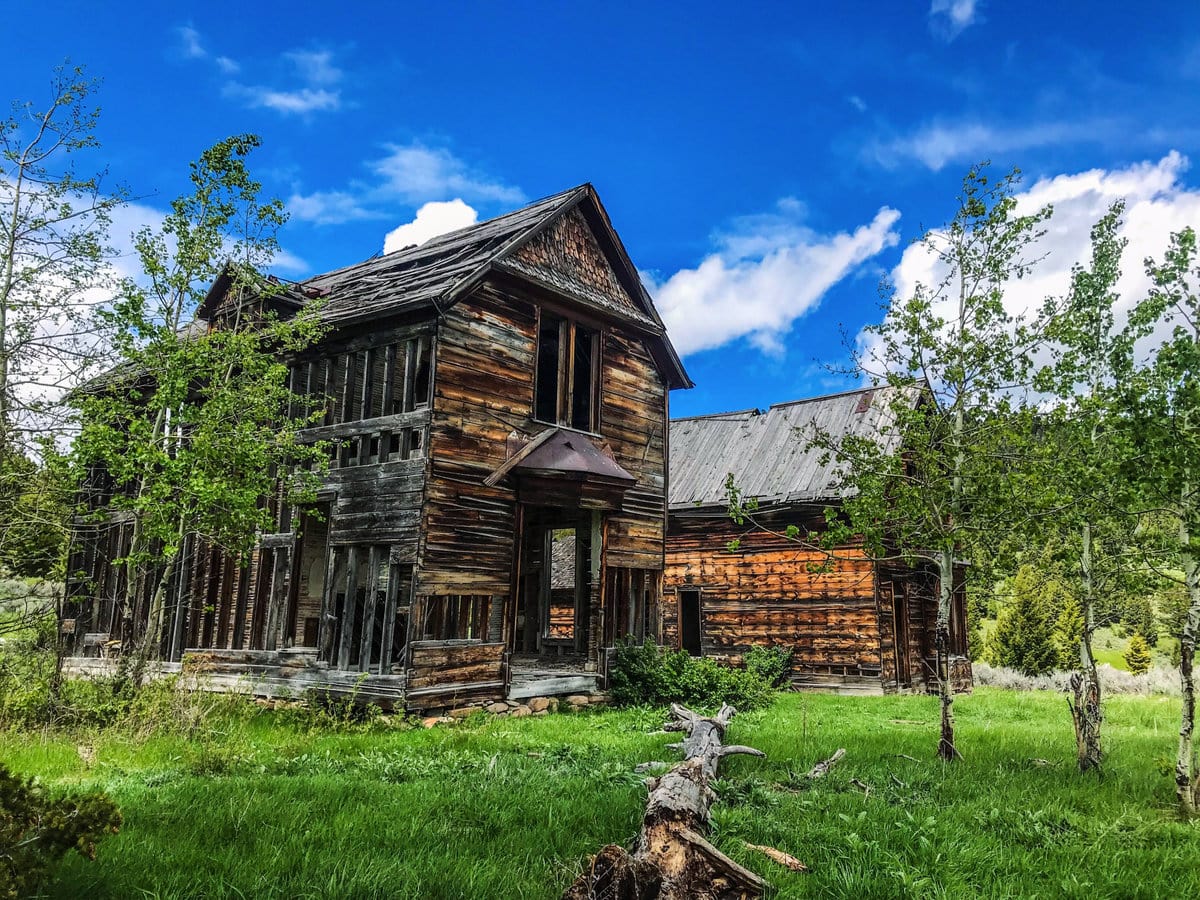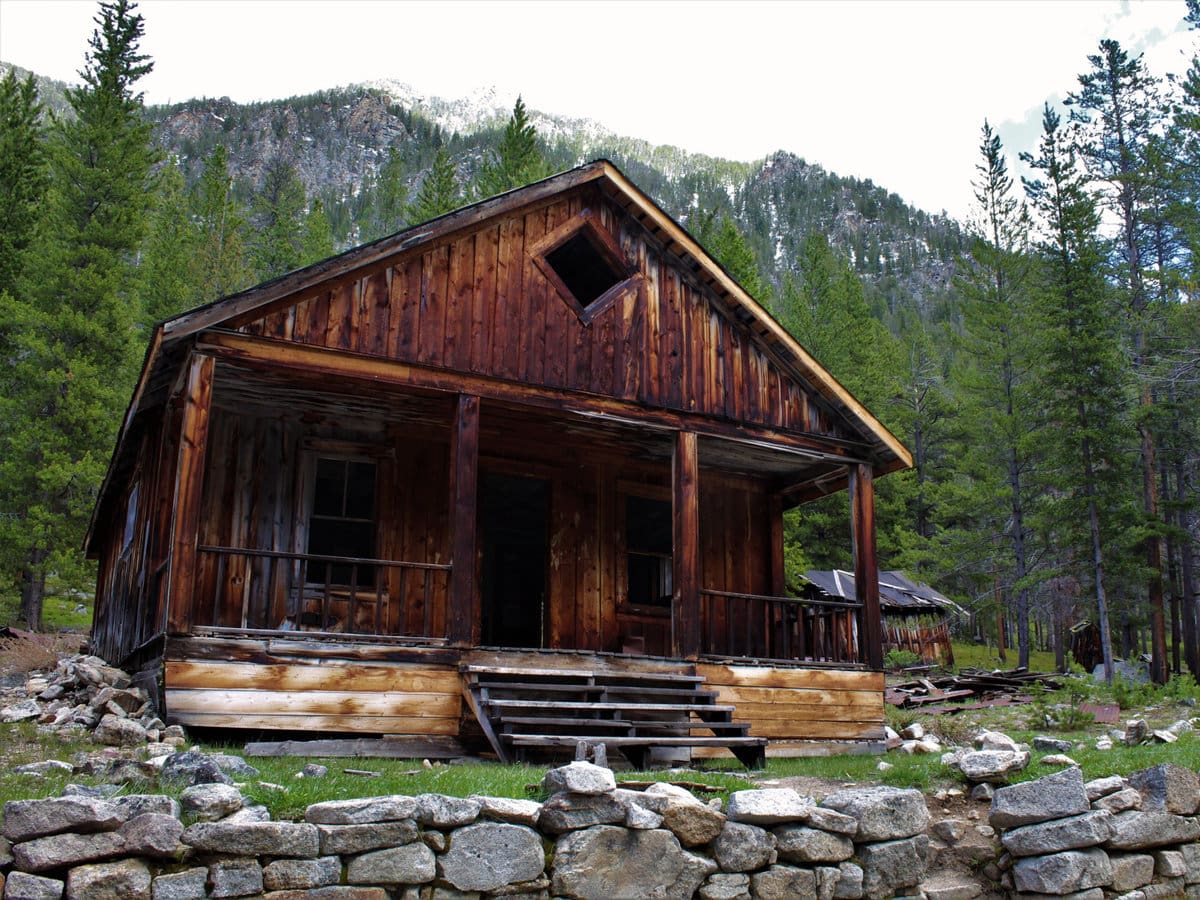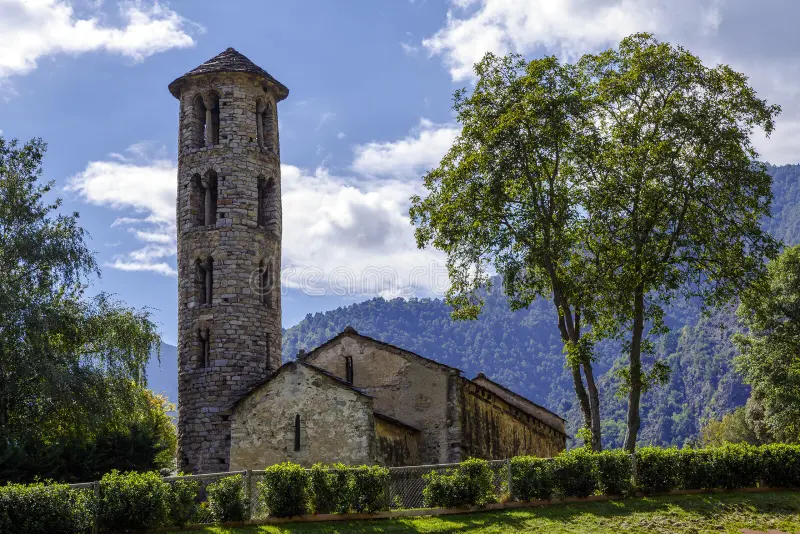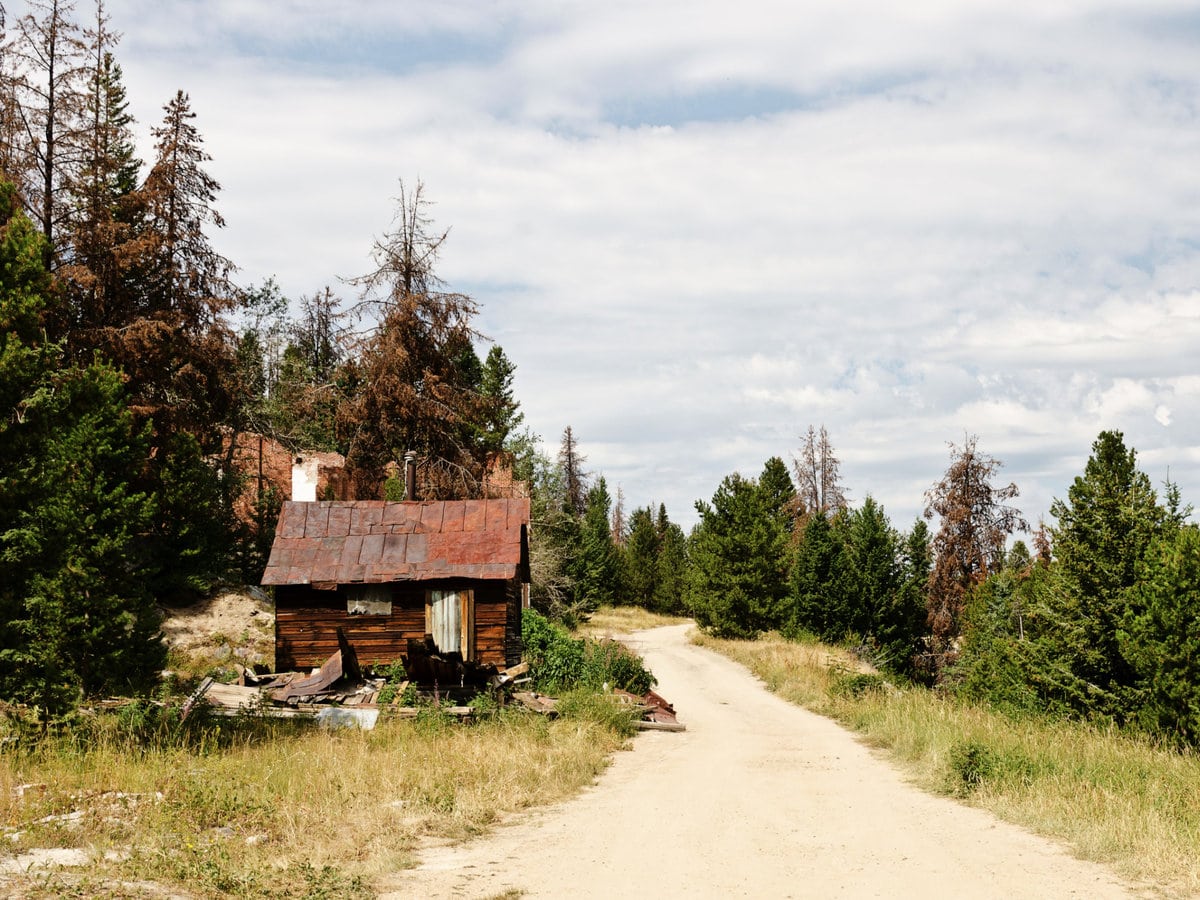The 1800s saw the rapid growth of numerous small towns and communities in the American West as a result of the mining of gold, copper, and other minerals and ore. After the ore was exhausted, these “boom towns” appeared to vanish as fast as they appeared, leaving behind abandoned mines, dilapidated structures, and whole towns with streets, residences, and commercial establishments.
These are called “ghost towns”
Numerous such “ghost towns” can be found dotting the vast state of Montana; most of them have few or no occupants left to keep the structures in good condition. While some of these communities have been maintained as historical monuments or have undergone restoration, others are in total ruin. Some may even have ghosts! Ghost towns are the best place to go if you want to travel back in time and discover Montana’s past.
1. Castle Town
In just seven years, Castle Town, which was formerly a thriving silver mining town, had nearly a thousand claims placed on nearby mines! Following the discovery of the first silver mine in 1884, the settlement had grown to include houses, businesses, a school, and, of course, taverns by 1891.

At its height, Castle Town was home to about 2,000 individuals, including the well-known Calamity Jane. Calamity Jane gained her nickname from her adventures and pursuits throughout the American West, although her true name was Martha Jane Cannery Burke. She moved to Castle Town with her spouse in order to start a restaurant, but their venture was short-lived because of “bad debt,” and they left after only a few months.
After a swift decline during the 1893 “silver panic” and eventual total abandonment in the 1930s, the only remnants of Castle Town are a few dilapidated wooden buildings that face imminent collapse. You would need to get permission from the landowner to visit the town site because it is situated on private property down a difficult dirt road. The state capital, Helena, which is located roughly 100 miles to the west, is the closest major city.
2. Garnet

Though the earliest miners were believed to have been there as early as the 1860s, Garnet was originally organised as a mining town in the 1890s. It is situated 20 miles from nearby Missoula and 11 miles along a dirt road. Currently, it stands as one of Montana’s best-preserved ghost towns, offering visitors the opportunity to explore approximately 180 buildings, sites, and structures. In 1898, there were as many as 1,000 people residing in Garnet; however, as the gold mine ran out 20 years later, the majority of the citizens left the town. Nearly half of the town was burned in a disastrous fire in 1912; the buildings were never rebuilt, though their charred remnants may still be seen.
3. Coolidge
The formerly prosperous town of Coolidge, now a deserted ghost town, is located just south of modern-day Butte. While Coolidge had a population of barely 350 during its heyday, it was home to Montana’s greatest silver resources. William R. Allen, the town’s founder and former politician, switched to become a prospector in the early 1900s from his previous profession as a politician. In honour of his friend Calvin Coolidge, the 30th President of the United States, he called his new mining camp and the town that followed.

By 1922, there was a school, some log homes, a store, a post office, and even telephone services. The price of silver took a sharp dive in 1923 and closed the mines, and the town was deserted soon afterward.
4. Coloma
Coloma’s remains are only a few kilometres away from Garnet; little is known about this abandoned hamlet in contrast to Garnet. The people came and went so fast that no permanent records were preserved, or if they were, they were destroyed at some point in the years that followed. There haven’t been any gold discoveries there since the late 1890s, despite the fact that there were some successful gold mines there and that some attempts to mine again were undertaken in the early 1900s.

Or has there already been? Situated on public ground, Coloma is a fascinating spot where just a few wooden structures remain standing or have partially collapsed. Though the little houses at the entrances to the mines are falling apart, there are rumours that people still visit them every summer to pan for gold. Given the estimated $200–250,000 in gold discovered in these mines, it wouldn’t be shocking if locals from neighbouring towns like Missoula kept their secrets about this abandoned hamlet to themselves. Coloma is reached after a protracted journey on a hard dirt road and a short trek uphill to the remains. For many years to come, this abandoned settlement will remain unknown.
5. Bannack
Originally settled in 1862, Bannack briefly served as the capital of Montana Territory until 1864. Today, the site of this well-preserved and maintained ghost town is known as Bannack State Park. With nearly 10,000 residents at its peak, Bannack was unexpectedly isolated at the time while being connected to the outside world by the Montana Trail. With multiple hotels, saloons, a grocery store, a few stables, and a few bakeries, Bannack was a bustling town. There are currently 60 buildings that are being cared for by volunteers. All of the buildings were constructed of brick or wood. In 1961, the Bannack ghost town site was included in the National Historic Landmark registry.

By the 1970s, the remaining permanent residents had left; the majority had moved to Dillon, which was only 30 minutes away. Currently a state park, staff members and volunteers recreate and imagine life as miners in the 1860s during “Bannack Days,” which take place every final weekend in July. What was once a thriving mining town is now a historical landmark that is conveniently accessible by automobile for tourists.
6. Comet
In the 1880s, Comet was established as a mining town with ore resources valued at over $20 million from nearby mines! That was an almost unthinkable amount back then. Although the majority of the mines were closed and the population had decreased by 1913, gold, silver, zinc, copper, and lead were all extracted here and the mining operations continued until 1941.

Scattered across roughly 35 acres on both sides of the aptly called High Ore Creek are the remnants of this very sizable hamlet. The Montana state capital, Helena, is just 40 miles away from this location, which is reachable by automobile. You should explore at your own risk because many of the structures are in unsafe or falling apart situations! Comet is a largely deserted ghost town with the exception of one inhabited house, whose identity is somewhat mysterious. In the 1890s, Comet reached its peak when up to 300 individuals made Comet their permanent home and hundreds of pounds of precious ore were mined there each day. There are still twelve intact structures, and within them linger echoes of the past.
7. Granite
Granite, now known as Granite Ghost Town State Park, was once a prosperous silver boom town that the state of Montana purchased and is now responsible for maintaining. Granite is virtually abandoned, despite being just a short distance from the quaint town of Phillipsburg. However, a handful of the structures have been kept up and are accessible to visitors. In a short amount of time, Granite saw an amazing 3,000 citizens, and the silver mining was extremely profitable. It was rather modern for the day; there were hotels, schools, hospitals, libraries, and more. Only the brick exteriors of the majority of the remnants today, such as Miner’s Hall, remain intact.

While accessing Granite necessitates driving up a somewhat windy dirt road, tourists can easily navigate the walking routes surrounding the structures. The mine near Granite was the world’s richest silver mine for a while! One strong vein produced more than $40 million worth of silver ore. Regretfully, the town suffered along with the collapse of silver prices in 1893, and it was all but abandoned soon after. Granite is a true ghost town, displaying its rich history through the remnants of its once-thriving population.
FAQ’S
Q1. What are some notable ghost towns in Montana?
Montana is home to several fascinating ghost towns. Some notable ones include Bannack, Garnet, Virginia City, Elkhorn, Comet, Kendall, and Castle Town.
Q2. Why should I visit these ghost towns?
These ghost towns offer a unique glimpse into Montana's rich mining history. You can explore well-preserved buildings, walk the deserted streets, and learn about the boom-and-bust cycles that shaped the region.